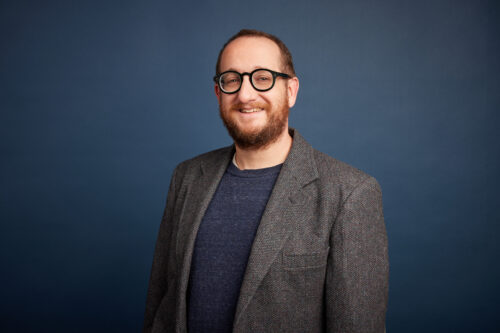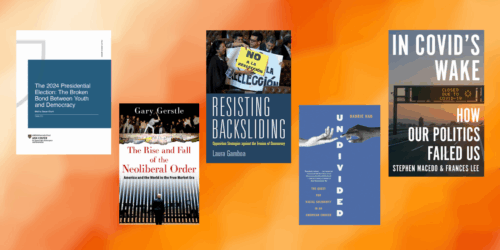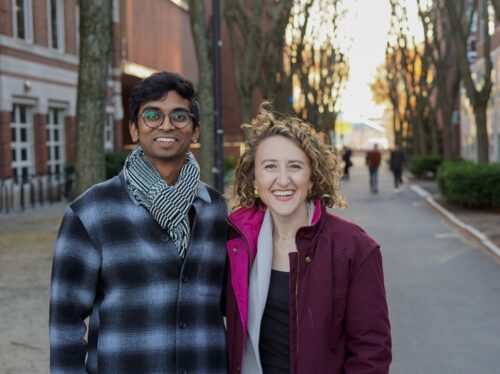For many, casting a vote in an election in the United States is no easy task. In part by design, and in part by the varied way elections are administered across the country, potential voters in the US face numerous barriers to the polls. The results are evident in the middling numbers of Americans who regularly bother to turn up to vote. Last year’s hotly fought presidential election nudged voter turnout up to 66.8% of eligible voters, the highest figure in generations. Yet compared to most other advanced industrialized nations, the US remains a laggard when it comes to voter turnout.
Recognizing that significant numbers of Americans are effectively disenfranchised by the many hurdles placed in their path when it comes to voting, two teams of graduating HKS Masters of Public Policy students used their capstone Policy Analysis Exercise (PAE) to work with organizations committed to strengthening civic engagement and voting access. With support from the Ash Center, which regularly provides PAE funding and other research support for HKS students, these students helped chart a path forward for their client organizations to better strengthen voter participation.
For MPP candidates Tiffany Fan and Carlton Lawrence, work on their joint PAE began not in the voting booth, but in the hospital waiting room. The pair teamed up with Vot-ER, a nonprofit that grew out of a program that placed physical voter registration kiosks within emergency rooms. The organization, led by two MPP graduates, Dr. Alister Martin and Aliya Bhatia, works to provide medical patients the opportunity to register to vote. The two HKS alumni hope to turn hospitals and community health clinics into physical spaces “where citizens should consider their civic health as well as their physical and mental health.” With COVID-19, Lawrence and Fan assessed Vot-ER’s pivot to low-touch, high-tech voter registration and vote by mail mechanisms, as well as its work building coalitions of stakeholders interested in promoting civic health across the healthcare system.
Meanwhile MPP candidate Yousef Ibreak worked with another organization dedicated to connecting with potential voters outside of traditional civic spaces. Ibreak partnered with Rock the Vote, the longstanding youth voter advocacy organization, to conduct an analysis of youth voter turnout and better understand the tactics used to drive young people to the polls. Ibreak focused his work on the state of Georgia, which was a leader in youth turnout in 2020 and had seen a spike in young people registering to vote since 2016. Findings such as Ibreak’s are critical for helping Rock the Vote and other organizations working to close the youth voting gap, which still trailed overall voting rates in the 2020 elections by seventeen percent. This gap in turnout by age, argues Ibreak, has considerable implications in both the candidates that are elected and the issues that elected official prioritize.
Civic engagement as a health intervention
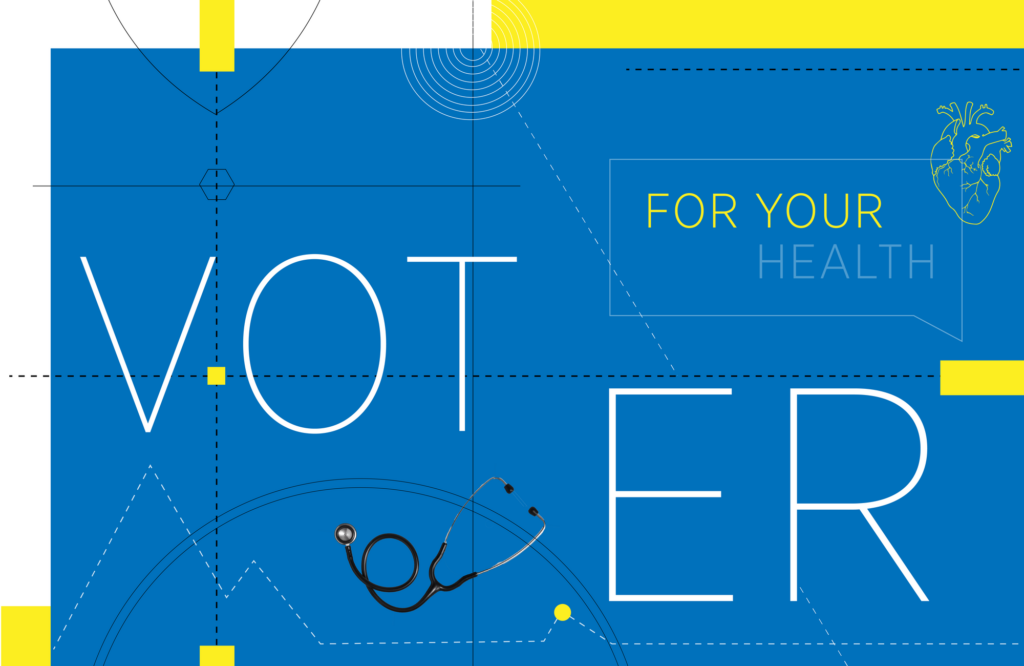
Tiffany Fan and Carl Lawrence’s decision to partner with VOT-ER as a PAE client meshed perfectly with their shared interest in healthcare and inequality. Lawrence, who is graduating with his MPP from HKS as well as a MD from Harvard Medical School will start his pediatric residency training at Mount Sinai Hospital in New York this fall. “I first heard about Vot-ER through the organization’s director, Alister Martin. As a dual MD-MPP himself, he was a major part of my own motivation for applying to the Kennedy School and an inspiration as someone who straddles the fields of clinical medicine, policy, and advocacy.”
For Fan, who is pursuing a joint MBA with the Wharton School, “starting my PAE in the middle of the pandemic, where COVID-19 exposed so many injustices in our healthcare system, Vot-ER’s goal of using healthcare settings to reach out to under-voting and underserved populations really spoke to me.” Lawrence, who had previously worked with the organization as the director of its national medical school Healthy Democracy Campaign, was galvanized by the experience of helping thousands of Americans vote in the 2020 elections. He jumped at the chance to partner with Fan and formally take on the organization as a PAE client to more systematically evaluate the group’s impact and opportunities for future growth. “I hope to bring Vot-ER and the notion of civic health into my future clinical spaces while working to normalize the idea of non-partisan civic engagement as an effective intervention both for my patients and the healthcare workforce,” reflects Lawrence.
The pair set out to analyze Vot-ER’s organizational effectiveness in key areas as well as provide recommendations on how they could make progress toward their dual missions of improving voter readiness and shifting health provider consciousness on the importance of civic health. By conducting interviews with Vot-ER staff and external partners, employing nationwide survey data of Vot-ER users, and leveraging anonymized data from the organization’s partner platforms, Fan and Lawrence were able to lay out several important findings and recommendations for the organization moving forward.
For example, the two determined that civic health interventions within healthcare spaces are both possible and scalable and that healthcare providers themselves who used Vot-ER tools and those they helped register are more racially diverse, female and younger than the broader healthcare workforce and general population. They also found that those same healthcare providers who used Vot-ER tools increased their own knowledge of social determinants of health and the importance of civic health and were also inspired to become further involved in civic engagement.
Moving forward, Fan and Lawrence recommend that Vot-ER not only maintain its place-based approach but prioritize building new support and partnerships with healthcare institutions and hospital leadership. They also suggested that Vot-ER scale its focus on organizing within the healthcare community in order to help meet its goal of normalizing civic health and also invest in its tech and internal capacity to better gather and analyze data from participants. These recommendations, the two argue in their PAE, will enable Vot-ER to harness the considerable momentum it has built and “normalize the notion of nonpartisan healthcare-based voter registration.”
Georgia’s youngest voters turn up in record numbers
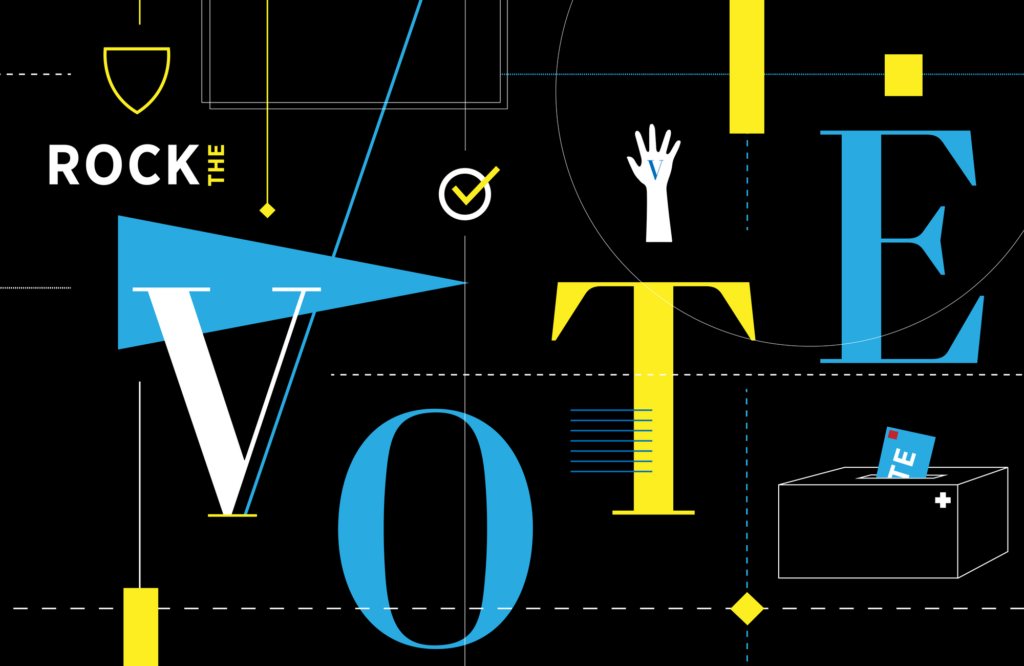
Like many millennials, Yousef Ibreak was familiar with Rock the Vote’s star-studded campaigns encouraging young people to head to the polls. “I was drawn to their mission of building the political power of young people.” With the increasing focus on the youth vote in the runup to the 2020 election, he quickly concluded it made sense to partner with the organization for his PAE client.
Ibreak writes in his PAE, Youth Voter Engagement: Developing Strategies to Sustainably Increase Youth Voter Turnout, that low voting rates among young voters are often attributed to causes such as habit formation, opportunity cost, and alternative forms of political participation (i.e., protests, social media, etc). In addition , researchers and observers note that young people are more likely to face obstacles to voting itself, such as getting time off from work, meeting registration requirements, and finding transportation to the polls.
With the 2020 presidential vote dominating much of the political landscape last year, Ibreak decided to focus his PAE with Rock the Vote on Georgia, a state that had two Federal elections determined on the margins (i.e., Presidential and January Senate Runoffs). In last year’s elections, Generation Z and Millennials compromised roughly 40% of eligible American voters, though their turnout rates were still disproportionately lower than older voters. In Georgia, however, voters aged 18-29 represent a larger share of registered voters than their overall percentage of the state’s population.
In his final report, Ibreak attributes younger Georgians’ willingness to turn up at the polls to a slew of demographic, policy, and organizing factors that has helped reshape the politics of the Peach State. Specifically, he highlights a 2016 administrative change that automatically registered Georgia residents to vote when applying or renewing a driver’s license as a catalyst for the state’s impressive youth voting figures. In fact some elected officials have pointed to this surge in voter registration numbers as a reason why the state has become more politically competitive and attempted to roll back the state’s automatic voter registration rules earlier this year. While those attempts fell short, Ibreak argues that “ensuring automatic voter registration remains intact should a priority for youth engagement.”
Demographic changes are another important trend line to watch regarding the youth vote. With the number of younger Georgians growing, Ibreak notes that “the electorate is changing by race and age, and interviewees provided several examples of how political organizing is shifting to engage this new electorate.” He recommends that future efforts to engage young people need to prioritize inclusivity in order to reach these potential voters, as well as shifting resources to help elevated local voices. Through a series of interviews, Ibreak found that committing organizing resources to ambassadorships, fellowships, and micro-influencers was an effective tool in 2020.
Ibreak hopes that his findings from the successful efforts in Georgia to increase youth voter turnout will aide Rock the Vote in their efforts across the country to engage with younger voters. “A big takeaway from this PAE is that there are countless ways to move the needle in the right direction. It doesn’t matter what your title is, your sector, or your background in this space, you have the ability to get people civically engaged,” he added.
Ibreak’s work on his PAE was a significant factor in his selection as the winner of the 2021 Martha H. Mauzy Award for Advancement of Democratic Governance, an annual award given by the Ash Center to a graduating HKS student for exemplary commitment to advancing democracy and democratic governance. “He identified factors contributing to turnout that I had not yet heard (from people who research this stuff for a living) and I know it is going to have impact,” said his PAE advisor, Adjunct Lecturer in Public Policy Robby Mook, who nominated him for the award.
“Yousef’s work identifying these important factors in strengthening civic participation among younger voters left a strong impression on us,” said Teresa Acuña, associate director for democratic governance programs at the Ash Center. “His PAE, along with his broader portfolio of work on civic participation across the Ash Center has made a tremendous difference.”

